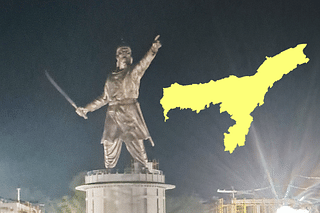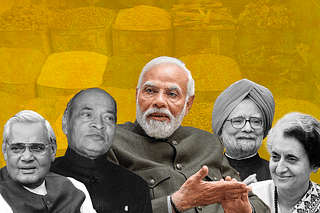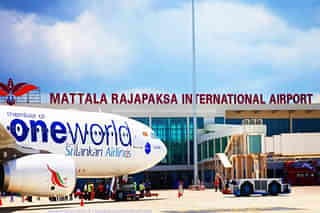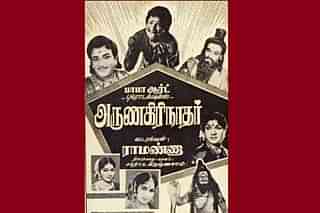Culture
1,000-Year-Old Temple Demolished In Tamil Nadu
Aravindan Neelakandan
Aug 21, 2017, 07:33 PM | Updated 07:33 PM IST
Save & read from anywhere!
Bookmark stories for easy access on any device or the Swarajya app.
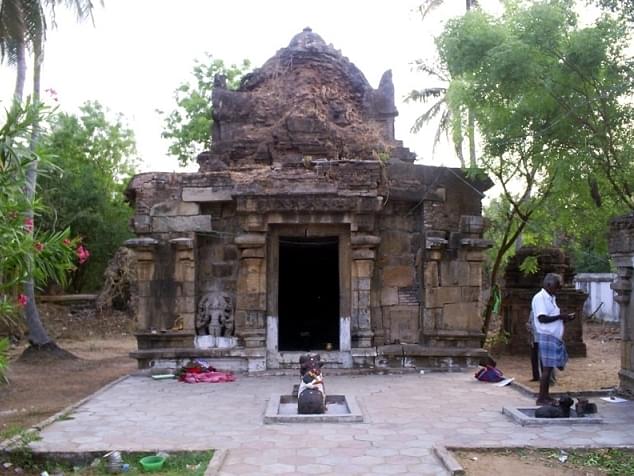
Many temples constructed at least 1,500 years ago or much before the temples recognised by UNESCO, are in ruins. Even the daily rituals are not performed. Some temples remain closed throughout the day with no one to even lighten the lamps.Madras High Court
These words are a part of a recent judgement by Madras High Court that sharply criticised the Hindu Religious and Charitable Endowments (HRCE) board, the government body that is in charge of the management and control of the temples and the administration of their endowments.
But, even these harsh words do no justice to the ground reality that is prevailing in and around Naganathaswamy Temple at Manampadi in Tamill Nadu's Thanjavur district. A broken wall, an area filled with overgrown shrubs, completely demolished temple platforms, remains of exquisite sculptures of deities scattered around – the whole scene around the temple as it is today, shows that HRCE has succeeded in making Malik Kafur, the temple-demolishing invader, look like a novice. The recent United Nations Educational, Scientific and Cultural Organization (UNESCO) report has only brought to the forefront what concerned citizens of Tamil Nadu have been saying for decades altogether.
Prelude
Starting from the emergence of Dravidian parties that made Tamil heritage their political capital, Tamil Nadu has been witnessing a rapid erosion of its cultural capital. Here is an extract from a report in India Today dated 31 May 1984:
During DMK rule in 1968, a party functionary in Thanjavur quietly converted some 20 acres of agricultural land belonging to the Thirumangalakkudi Siva temple run by the Thiruvavaduthurai mutt into house sites. The temple got a mandatory injunction from the court to restore the land to agricultural use. But the decree was never executed because of political pressure on the mutt head. The housing colony remains to this day. Earlier, in 1967, another powerful district office-bearer of the DMK persuaded the Thiruvavaduthurai mutt head to lease him almost an entire village in Pattukottai taluk owned by the mutt. This man regularly defaulted in his rent payments to the mutt, though he was collecting high rents for the portions of the village he subleased to others. He lost control of the land only when the AIADMK came to power in 1977 and the sub-lessees were made leaseholders.
The gross mismanagement and the nurtured deterioration of temples under Dravidian movement may not be ineptitude on the part of the state. The situation was no different when All India Anna Dravida Munnetra Kazhagam (AIADMK) was in power. The report further states:
The AIADMK, in its turn, has used the infrastructure of HR&CE Department for its own political ends. Most temple trustees are AIADMK members and many of the paid temple servants are also ruling party men.
It may have an ideological basis. But, during the heydays of Dravidian propaganda, some of the popular slogans, which were used to drive both the leadership and the cadre hysterical were:
Why the Gods who have no hunger, should be endowed with land grants?
When shall the day come when we can blast with cannon both the Nataraja of Chidambaram and Sri Ranga of Thiruvarangam?
When political parties with such attitude started gaining control of the temples, they systematically started destroying their sanctity, and started stripping them of the age-old grants bequeathed to them by kings and patrons. Rampant corruption also saw some gruesome killings, when honest officials challenged the political mafia. In 1980, C Subramania Pillai, a jewel verification officer at the Tiruchendur Muruga temple, was killed at the holy town of Tiruchendur. In 1983, an audit inspector-trainee P Venkatachalam, attached to the Srirangam temple, died mysteriously at Srirangam town. Such deaths showed to what extent the politicians in collusion with the state machinery would go to continue their institutionalised plundering of Hindu temples.
Both the Dravidian parties – Dravida Munnetra Kazhagam (DMK) and AIADMK – invented new ways to misguide the people by performing grand Kumbhabishekams at the temples, which often involved renovation of the temples. Most of the time the renovation process included drenching the entire temple with chemical paints or employing highly-detrimental techniques such as sand blasting etc. Apart from such shoddy handling of temples, the stealing of idols had also become a big business with officials colluding with antique smugglers. The recent judgement has come down heavily on this mafia network. It is from here, the tragedy that struck Manampadi temple, unfolds.
Manampadi Temple As It Was
Swarajya was able to gain access to some old pictures of the temple from REACH Foundation before its demolition by HRCE officials. These pictures show the plight of the temple that was not cared for and how it was left unattended. Covered with shrubs, a part of the old brick structures falling apart, yet the basic stone structures standing still.
The temple, which is believed to be almost 1,000 years old, bears features of Chola architecture. It also shows some exquisite sculptures of deities which appeal to aesthetics and inspire devotion. Local Tamil scholars believe that the temple also has depictions of Rajendra Chola, the son of great Raja Raja Chola. However, some scholars differ. But they all agree about the ancient nature of the temple and the importance of these sculptures. The temple also has inscriptions. Thus it is important from the point of view of religion, culture and history.
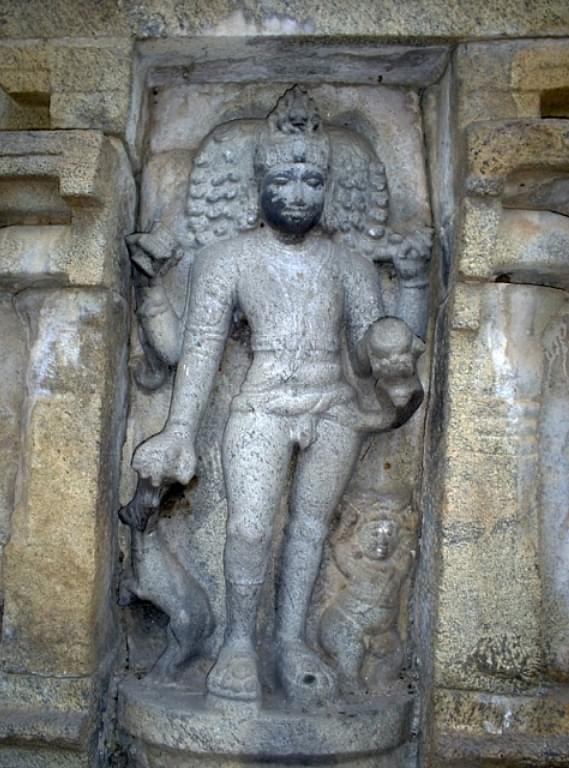
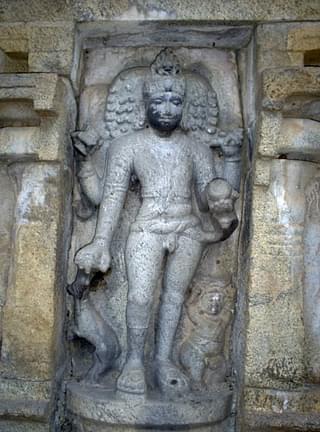
Now:
On 13 August 2017, Bharatiya Janata Party's (BJP) 'Tamil Development Department' head Er Natarajan visited the temple site to assess the damage. That gave an opportunity to this writer to accompany the team. Sri Kannan from Kumbakonam, an organic farmer and a well-known social worker, popular with the locals also accompanied us. One man, who has been fighting relentlessly against the encroachment of the temple land, is M Selvaraj, who was former BJP district president. He had sent petitions after petitions citing survey numbers and old records, complaining about the encroachments as well as other illegal activities in the temple premises. His petitions and right to information (RTI) requests had forced the local administration to order a probe. However, with greater political forces at work this individual finds himself helpless.
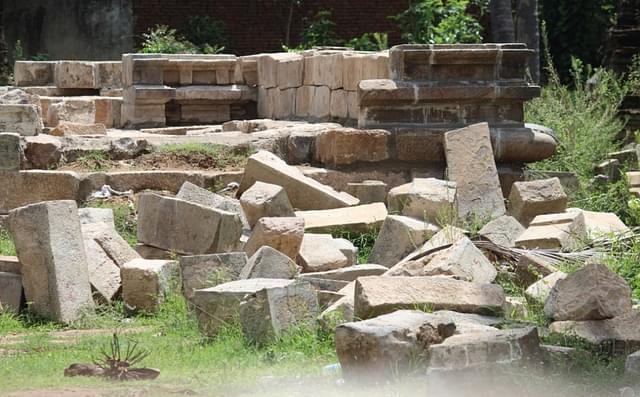
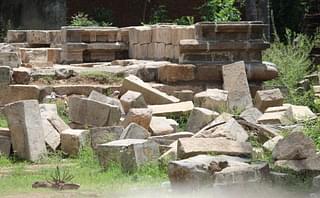
Talking to Swarajya, Natarajan said that he wanted to find a solution to this horrendous act by HRCE, as well as stop the passing of buck by various departments of the state government like HRCE and the state archaeology department. He was also of the opinion that given the dismal and disastrous track record of both HRCE and Tamil Nadu Archaeological Department in conserving the temples, it is high time that the Archaeological Survey of India (ASI) takes over the maintenance of temples that have been identified as heritage sites in Tamil Nadu.
Fortunately, Tamil Nadu has a non-governmental organisation (NGO), which has eminent archeologists and professionals, who have experience in renovating temples with an approach that blends scientific method with the veneration that the temples deserve. REACH Foundation has successfully taken up such projects, and hence Tamil Nadu can at least be assured that there is no dearth of professional help available in case the government decides to conserve rather than destroy the cultural wealth of ancient temples.
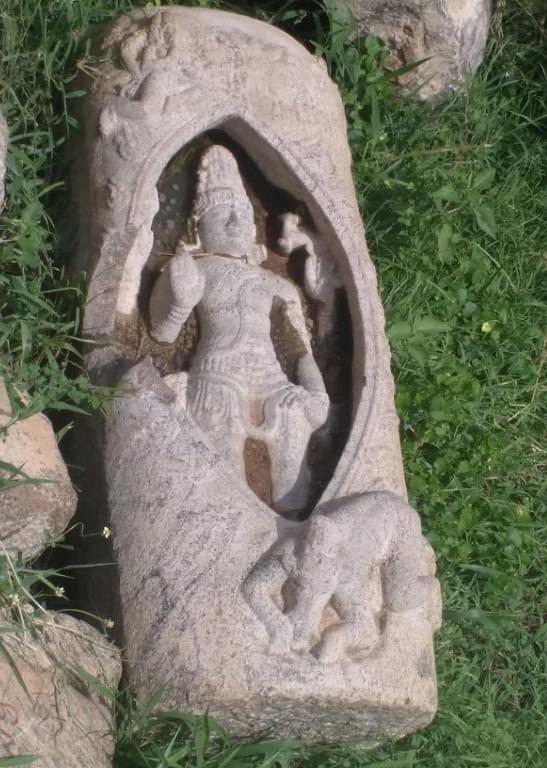
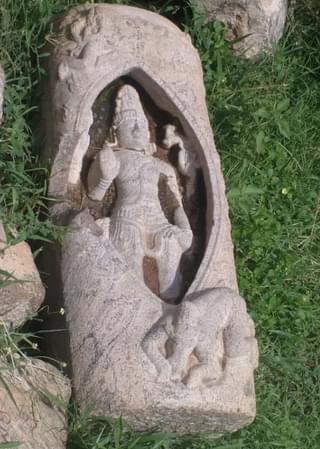
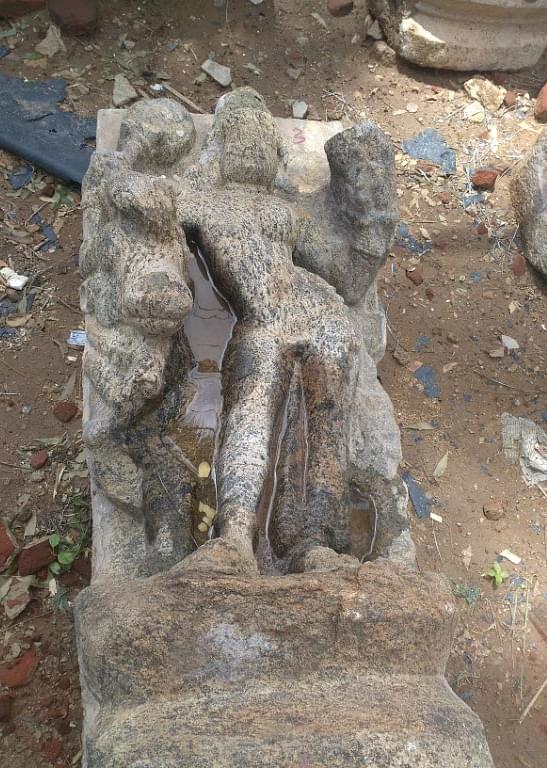
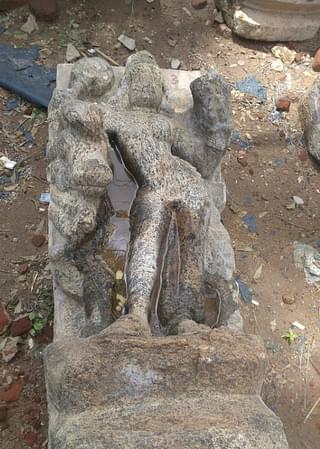
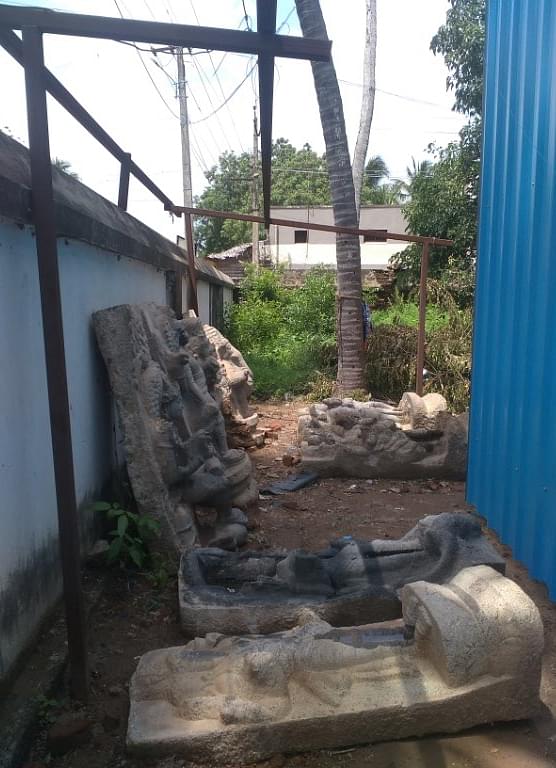
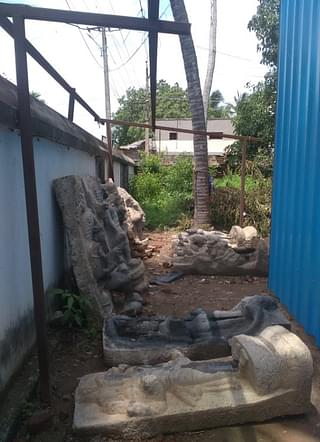
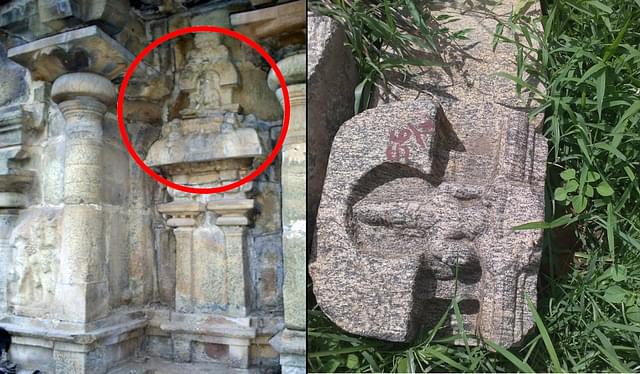
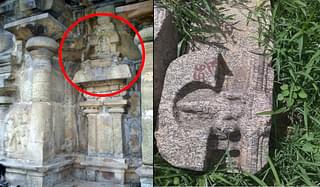
Selvaraj, the local activist, who has single-handedly fought for decades to preserve the temple points out that almost every government department has plundered the temple. His RTI query has revealed that the Tamil Nadu Highways Department has appropriated the land that belongs to the temple to build an adjoining road. It had demolished a centuries-old compound wall, which itself should be considered a part of the heritage monument.
Selvaraj strongly believes that the government should get out of the temple and should hand it over to a committee that consists of local communities, professional archaeologists and traditional monastery heads. Meanwhile, he is seeking action against various government departments that inflicted immeasurable damage to the temple as well as its restoration effort.
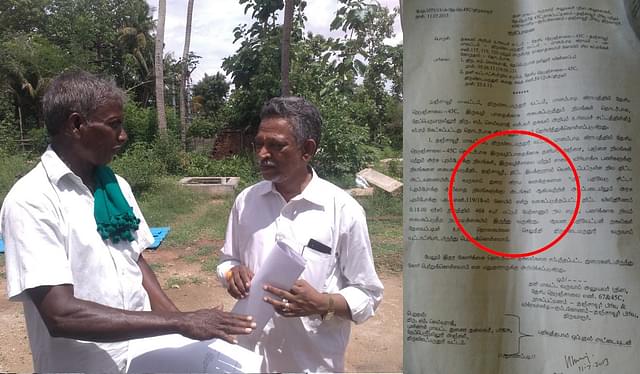
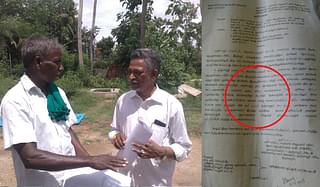
That HRCE is not capable of conserving the heritage monuments, leave alone conducting the rituals properly is an established fact in Tamil Nadu. Temples with invaluable bronze idols, acres of lands and exquisite sculptures have become a mine of wealth for the unscrupulous elements, which have becomes institutionalised in Tamil Nadu. What we have in Tamil Nadu is a model of what can happen to Hindu temples when they are totally subjected to a state with unlimited powers and an ideology hostile to a dharmic way of life.
The continuous smuggling of idols, surfacing of the official-politician-idol smuggler nexus, illegal occupation of temple land and the callous way in which temple sculptures are being destroyed and disfigured by HRCE – all these point to one solution – the need for a people’s movement to force HRCE out of Hindu temples in Tamil Nadu and a takeover by either a competent Hindu body or as a second choice ASI.
Header image: Temple before demolition (REACH foundation)
Save & read from anywhere!
Bookmark stories for easy access on any device or the Swarajya app.
Aravindan is a contributing editor at Swarajya.
Introducing ElectionsHQ + 50 Ground Reports Project
The 2024 elections might seem easy to guess, but there are some important questions that shouldn't be missed.
Do freebies still sway voters? Do people prioritise infrastructure when voting? How will Punjab vote?
The answers to these questions provide great insights into where we, as a country, are headed in the years to come.
Swarajya is starting a project with an aim to do 50 solid ground stories and a smart commentary service on WhatsApp, a one-of-a-kind. We'd love your support during this election season.
Click below to contribute.

